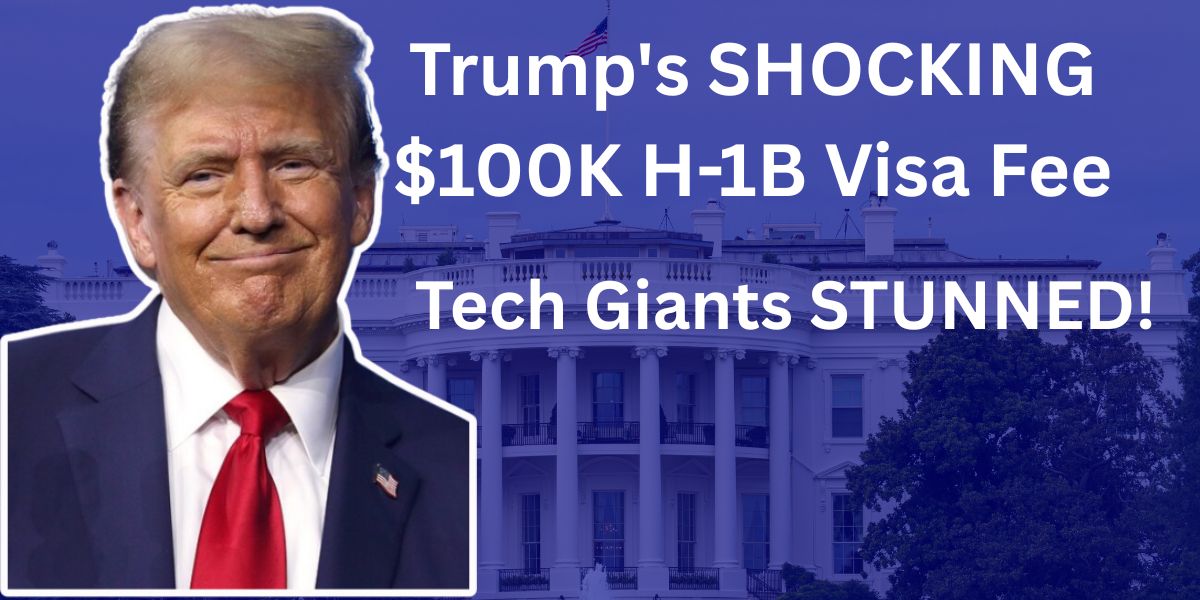The markets just did something weird that caught everyone off guard, but it’s not about stocks this time. President Donald Trump signed a proclamation Friday that would extensively overhaul the H-1B visa program, requiring a $100,000 fee for applications in a bid to curb overuse. This is nuts when you compare it to what companies pay right now.
Looking at the current fees that are associated with this H-1B visa application, we’re dealing with much lower numbers. What we see now is about a $215 fee to register for the lottery and about a $780 fee for what is called a Form I-129 supplemental petition.
What this will essentially do is create an additional $100,000 fee that would make the pool available of those who are eligible to apply that much smaller. This is the latest technique or strategy on behalf of the administration to really curtail legal immigration.
The Big Picture Behind This Move
This is important because on the campaign trail, Trump got a lot of votes and support on really curbing the illegal immigration aspect. We’re getting smaller numbers at the border, ramping up the deportations. But this is switching over to the legal side of things.
This is particularly an area when big tech and looking at workers, their pay, that catches attention. When we hear H-1B, that’s what I think of as the tech industry. There’s been a bunch of tech CEOs that went with the president over to the UK and then just last week they had a big dinner at the White House.
The question becomes whether he’s been having conversations with the tech industry who are saying we need these workers, and then he’s saying, okay, well, look – this is where it gets complicated.
The Internal Republican Battle
There is division within the different factions that make up not just the Republican base but the MAGA base. We actually saw this come to light last winter. There was a big fight that escalated on X and other forms of social media in which we had people such as Elon Musk, who was earlier involved with the Department of Government Efficiency cost cutting initiative, as well as Vivek Ramaswamy, who previously ran for president and at one point was involved in that effort.
These were people who were really supportive of the idea that this could help with the labor force and should be something pursued. Then there have been others who are more conservative really not agreeing there.
Who Wins With the $100,000 Fee?
What we can glean from this is that this will really minimize the amount of people who are eligible to apply. If you’re looking at curtailing legal immigration, that seems to be what people who are on the more conservative or far to the right side of the base would like.
The announcement to impose a $100,000 fee on H-1B visas sent shockwaves through corporate America. But here’s what’s really happening – there’s confusion about the details. A White House official told CBS News Saturday that the $100,000 is a one-time fee that only applies to new visas and is not an annual payment. It does not apply to renewals or current visa holders, the official said.
The Economic Reality Check
We’re looking at early economic data that’s coming in. There was recently a CBO report that suggested looking at some of the combination of the tariffs, the taxes, and that we are seeing population declines as a result of the shift in net migration and how that could potentially negatively impact the economy. Economists had been worried about this.
“We need great workers, and this pretty much ensures that that’s what’s happening,” according to Trump’s administration officials. But the evidence points to something more complex.
What This Actually Means for Tech Companies
More than half a million U.S. residents are in the United States on H-1B visas currently. The timing here is wild because USCIS has released implementation guidance for the President’s September 19 proclamation restricting H-1B entry without a supplemental $100,000 payment. The guidance confirms that the proclamation does not apply to applicants with petitions filed before the effective date (September 21, 2025).
The tech industry that’s been courting Trump suddenly finds itself facing a massive cost increase for bringing in skilled workers. The pattern suggests this is less about economic policy and more about internal Republican politics playing out in real time.
The Global Response
India’s Foreign Ministry says Trump administration’s move to increase H1-B visa fees may have humanitarian consequences. This makes sense considering the scale of workers from India and China who use this visa program.
What emerges from this is a fundamental shift in how America approaches skilled immigration. The $100,000 fee essentially creates a premium tier system – only companies with serious capital can afford to bring in international talent now.
What Happens Next
The real driver behind this is political positioning within Trump’s coalition. The tech CEOs who thought they had influence are learning that immigration hardliners still hold significant sway. This explains why we’re seeing legal immigration restrictions despite Silicon Valley’s recent White House access.
The numbers don’t lie – this fee represents a 12,700% increase over current application costs. That’s not a policy tweak, that’s a complete restructuring of who gets access to American skilled worker visas.
What becomes clear is that Trump is prioritizing his immigration-focused base over the tech industry’s labor needs. The evidence shows that when internal Republican factions clash, the restrictionist wing still wins on immigration policy, even when it potentially hurts economic growth.
